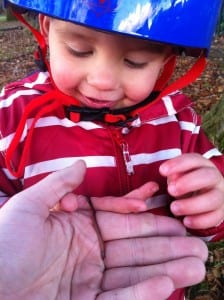Shown Wednesday night, Fantastic Voyage (1966), was a Technicolor film of epicly camp proportions. And was brilliant for it. What could be better than a plot involving shrinking a crack team of surgeons to microscopic levels in a military submarine to operate on inoperable brain damage of an agent carrying intel of national importance? How about shoddy science. shaky sets, a casual swim through the inner ear, Raquel Welch in a skin tight full body suit brandishing a laser gun and a shady covert military organisation where generals smoked cigars in dimly lit conference rooms. All classic film night fare.
But one audience member had an altogether unexpected response to this “silly old film*”. Here is an email that landed on my desktop this morning:
“What a great film night this was, not least for its rousing introduction by Professor Joe Cain.
But as the film ran, Joe’s words of wisdom began to fade as I became increasingly engrossed by the music … which does not properly begin until the main characters are injected into the body of the patient. Here was a fully composed orchestral score (no electronic short-cuts here) … time and again evoking the sound world of Arnold Schoenberg (1874-1851), and his early twentieth-century disciples.
After some quick homework I uncovered the (new to me) name of New York composer Leonard Rosenman (1924-2008) … no surprise to find he was pupil not only of Schoenberg, but also of other twentieth-century musical pioneers Luigi Dallapiccola (1904-1975) and Roger Sessions (1896 –1985).
The score for Fantastic Voyage is notable not only for its large orchestral forces and the huge range of orchestral colours drawn out by Rosenman, but for its uncompromising atonal serialism, perhaps unique in film scores up to that point. Unsurprisingly, for many listeners the score is cold and unrelentingly sterile, but such critics would no doubt think this true of so many 20th Century musical modernists and their disciples.
Rosenman’s highly structured compositional techniques produce a soundscape that feels not out of place today – so ubiquitous has that serial atonal sound world become in accompanying such suspenseful visual media – indeed these days a pastiche might be thrown together in no time at all by a talented undergraduate composition student with a laptop. But for Rosenman every note and colour combination had to be not only imagined in silence (no ready sound samples for him) but also set down on paper by hand before the whole could be brought to life by a symphony orchestra of (I guess) 80 or so musicians; the real effect unknown until finally performed.
A cd lifted from the soundtrack of the 35mm reels is available, and I have now ordered it. Never mind Film Studies, lets hear it for Musicology!”
Here’s the link to the TV spot from 1966. Listen to that score.
Fantastic Voyage (1966) TV Spot
*Quote from Professor Joe Cain
 Close
Close







